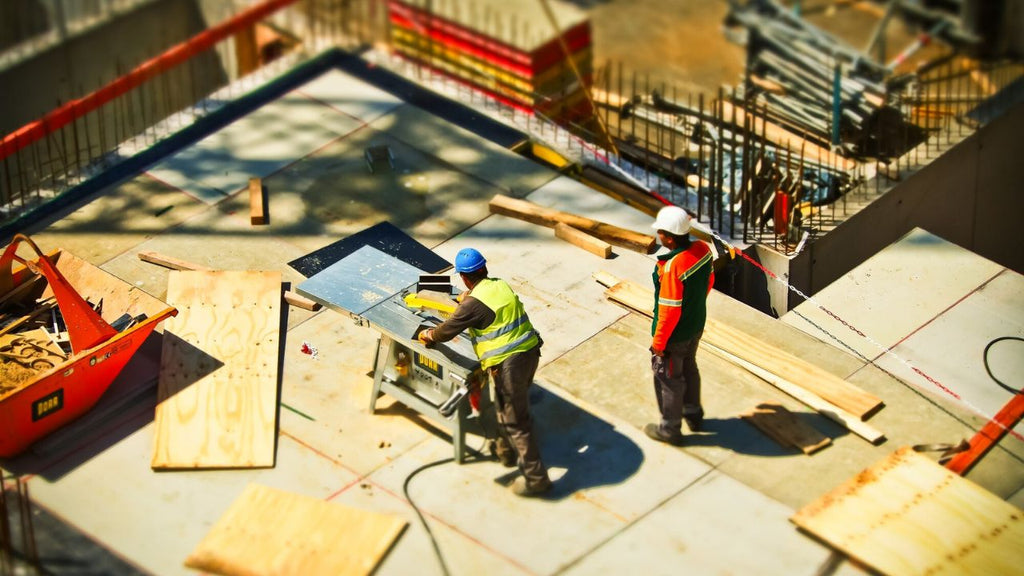A Quick Guide to Construction Site Safety

Falls are the leading cause of death in construction, accounting for 36.4% of total fatalities in the industry. Electrocutions and machinery accidents are also some of the most common on-site accidents.
Accidents like these are preventable if you create a safe culture in the workplace. You can reduce the risks and number of incidents by following OSHA guidelines.
Construction site safety should be the company’s core value. Work results are vital, but the health and lives of the people take priority.
Keep everyone involved in keeping their space safe. It applies to workers and supervisors. Read on and learn some construction site safety tips.
Analyze the Worksite
The first step is to conduct a worksite analysis. It involves an in-depth look into the processes and equipment to collect data.
Leaders use the data to identify the potential safety and health hazards on-site. They determine the appropriate preventive steps and recommend a safer method to do the job. They’re in charge of creating the safety guidelines for the site.
Unfortunately, a worksite analysis doesn’t end in one sweep. You have to repeat it whenever a new process or equipment appears. Either could bring a new hazard, requiring additional safety procedures.
You also have to conduct regular safety inspections to assess the risks. Any new data, such as accidents, also factor into the analysis.
Conduct Workplace Safety Training
After creating a safety plan, make sure every employee knows about it. It’s a skill they must learn before they even take on the job.
Each employee must receive comprehensive training, ensuring they learn how to do it safely. They have to learn OSHA’s compliance requirements so they can follow them.
The best way to ingrain safety into their minds is to give examples of consequences. What would happen if they neglect following a specific rule? Instead of letting them learn on the job, show them so they won’t be as inclined to make a mistake.
OSHA provides resources for training, such as videos, worksheets, and pamphlets to help businesses train their staff. Give some copies, so your employees have easy access. Hold refresher courses now and then, as well.
Wear Proper Protective Equipment
Provide adequate PPE to your workers, and make sure they wear it at all times. At the minimum, each employee must have:
- Hard hat
- Safety glasses
- Safety clothing
- Protective gloves
- Foot protection
Depending on the job, you may also need additional protective clothing. Some examples are:
- Hearing protection
- Full face shield
- Fall protection equipment
- Chemical splash goggles
- High-visibility clothing
Even with adequate training and proper compliance, accidents may still happen. PPEs provide an additional layer of protection should something go awry.
Take note of any health risks such as dehydration. Make sure workers have access to plenty of water to avoid illnesses.
A person can sweat as much as a liter of water in an hour of heavy work. In the summer, the heat makes dehydration riskier. Never overlook it in winter since the added layers of clothing can also make the worker sweat more.
Report Issues
Your construction site safety training should also include what to do when the worst possible scenarios happen. Ensure everyone on-site knows how to proceed during crises. It prevents panic and subsequent loss of lives.
Encourage employees to report anything harmful to their health and safety. A machine moving more slowly than usual is worth a look. Welcome even a near-miss incident, and make sure the supervisors take action.
Reporting possible issues and near misses allows management to fix them ASAP. After all, they may become a real problem when left alone. Your risk of accidents will decrease the sooner you resolve these situations.
Use the Right Equipment
Provide the proper tools and equipment to ensure workers can do their jobs efficiently and safely. Training should cover how to operate each one.
Each piece of equipment has varying levels of risk. When employees improperly use them, they might be compromising themselves.
If a tool isn’t working as intended, don’t force it or alter something. The best-case scenario is that nothing happens. But, the worst-case scenario is it becomes dangerous.
Train the workers not to remove the guard rails, machine guards, and other protection. If there’s a defect, they shouldn’t attempt to fix it if they lack proper training. No one should tamper with anything without authorization.
Create a Culture of Safety
Your best defense against accidents is a culture of safety. How do you create one?
Safety goes beyond wearing PPE and performing on-site inspections. It should be the company’s core value, and the employees should know it, as well.
Reiterate its importance via communication and transparency. Use various methods, such as emails, text messages, and even mobile apps.
Apply incentives for following proper procedure. Rewards motivate employees to do better and commit to safe practices.
Keep the Site Tidy
Construction sites are messy, but keeping them as clean as possible reduces the safety risks. Distribute clean-up responsibilities to workers. Motivate them to keep their work area tidy, keeping it free of slip and fall hazards.
All materials must go into proper storage at the end of the day. Make each employee responsible for their tools.
Access and escape routes should be clear of clutter, as well. People must be able to use them whenever needed.
Use rotating cleaning assignments to make everyone participate. Allowing them to be hands-on in keeping their space tidy also instills a safe culture within them.
Learn More About Construction Site Safety
Creating proper construction site safety guidelines reduces the risks for accidents. Not only do you help keep your employees safe, but the company also avoids liabilities.
Creating a secure culture is never-ending. It means avoiding stagnation and complacency to prevent future accidents.
Do you need more ways to protect your employees? Contact us today for all your safety apparel needs.
